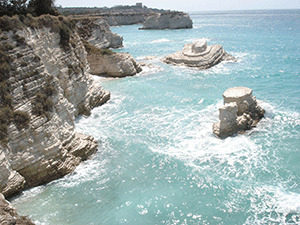Lattakia and sea are co-existing together, they outlined the history of humanity. That city is a symbol of civilization having introduced great personages as al-Shiekh Ez al-Deen al-Kasam, Jule Jamal and the late president Hafez al-Assad.
That is a wonderful city with a long history starting from the era of Set Mrkho located 13 km at the north-east of Lattakia, being one of the largest archaeological sites in Asia and Europe.
Ugarit era: between al-Aqra’ mountain and al-Sien river,it included many of ancient archaeological cities like “Barimōta” which is named later by “Ramita,” the new name of Lattakia.
Greece era: The Greeks entered Syria in 333 B.C by al-Exander al-Makdouni, who named Lattakia city by al-lozbakieh according to his mother’s name.
 Roman era : on 64 B.C, Lattakia was freed by Arab Muslims in 637 A.D, keeping on its name as “Lattakia” till now.
Roman era : on 64 B.C, Lattakia was freed by Arab Muslims in 637 A.D, keeping on its name as “Lattakia” till now.
Salah al-Deen al-Ayoubi freed Lattakia after undergoing to Crusader’s occupation.
1516-1918 Lattakia struggled against the Ottoman occupation.
It also fought against French occupation till victory is achieved on April. 17, 1946.
Lattakia under the leadership of the late President Hafez al-Assad witnessed a historic renaissance at various levels: economic, social ,and touristic.
There are many significant archaeological sites in Lattakia. Some archaeological samples have been collected in the museum according to the historical, Ugaritic, Greek, Roman and Islamic chronology.
Famous Archeological Sites
– Ugarit
– Ras al-Baseet
– Ras Ibn Hani
– Salah al-Deen Citadel
– Al-Minka Citadel
– Al-Mahalba Citadel
– Siano Emirate
– Archeological Jabla Theater
– Al-Soultan Ibraheem Mousque
F. al-Taleb
Edited & translated: H.SH

